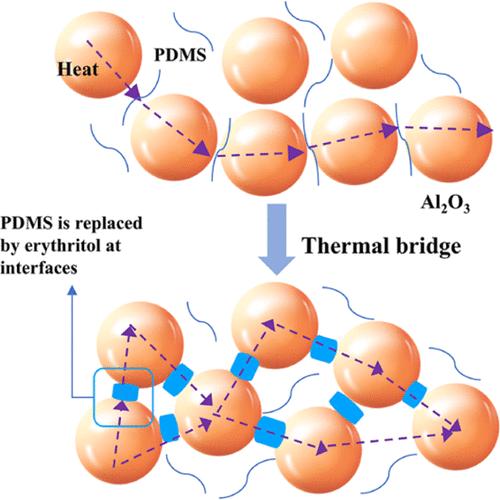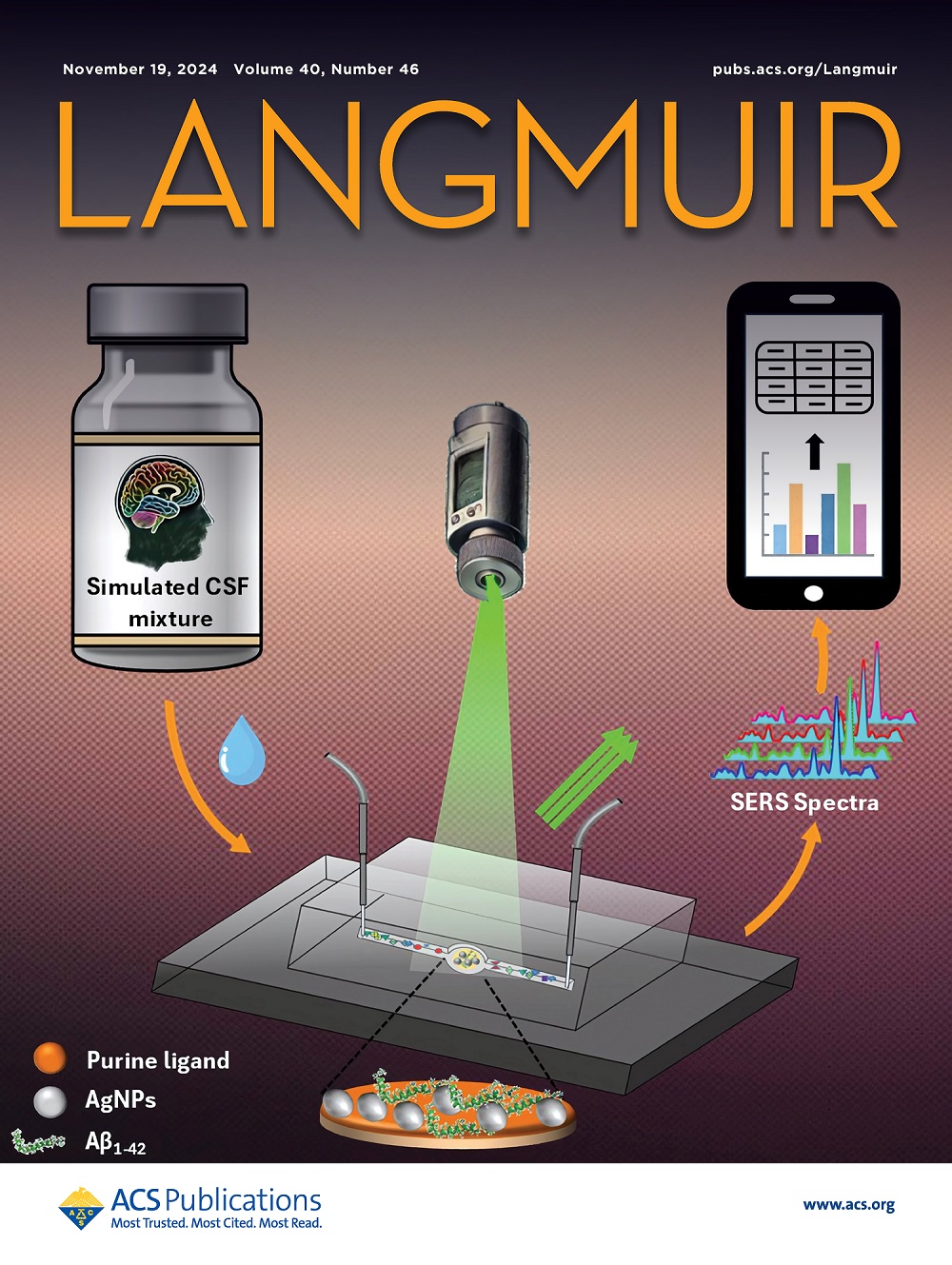Construction of Thermal Bridge in Alumina/Polydimethylsiloxane Composites by Selective Location of Erythritol
IF 3.7
2区 化学
Q2 CHEMISTRY, MULTIDISCIPLINARY
引用次数: 0
Abstract
Alumina/polymer composites are conventional thermal interface materials widely used for heat dissipation. However, the interfacial thermal resistance (ITR) dominates the thermal conductivity (TC) of these composites, presenting a critical challenge. This study introduces erythritol as an innovative thermal bridge to effectively reduce the ITR by selectively locating it at the interfaces among alumina (Al2O3) particles. Through a straightforward preparation method, erythritol was positioned among Al2O3 particles, followed by the impregnation of poly(dimethylsiloxane) (PDMS) into the filler gaps. The resulting Al2O3/erythritol/PDMS composite demonstrated a thermal conductivity of 3.12 W·m–1·K–1 at an erythritol content of 4.16 wt % and a filler content of 53.7 vol %. Minor usage of erythritol brings a 34.4% enhancement compared with conventional Al2O3/PDMS composites. Additionally, the composite shows potential as a thermal switch due to erythritol’s phase change properties. This approach, which emphasizes fluid-state processing and interface bridging, presents a promising new strategy for improving the thermal conductivity of ceramic-filled polymer composites.

求助全文
约1分钟内获得全文
求助全文
来源期刊

Langmuir
化学-材料科学:综合
CiteScore
6.50
自引率
10.30%
发文量
1464
审稿时长
2.1 months
期刊介绍:
Langmuir is an interdisciplinary journal publishing articles in the following subject categories:
Colloids: surfactants and self-assembly, dispersions, emulsions, foams
Interfaces: adsorption, reactions, films, forces
Biological Interfaces: biocolloids, biomolecular and biomimetic materials
Materials: nano- and mesostructured materials, polymers, gels, liquid crystals
Electrochemistry: interfacial charge transfer, charge transport, electrocatalysis, electrokinetic phenomena, bioelectrochemistry
Devices and Applications: sensors, fluidics, patterning, catalysis, photonic crystals
However, when high-impact, original work is submitted that does not fit within the above categories, decisions to accept or decline such papers will be based on one criteria: What Would Irving Do?
Langmuir ranks #2 in citations out of 136 journals in the category of Physical Chemistry with 113,157 total citations. The journal received an Impact Factor of 4.384*.
This journal is also indexed in the categories of Materials Science (ranked #1) and Multidisciplinary Chemistry (ranked #5).
 求助内容:
求助内容: 应助结果提醒方式:
应助结果提醒方式:


